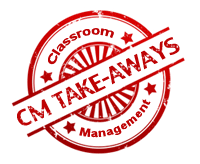Classroom Ecology and Arrangement

It is well known among educators that the classroom environment can have a profound impact, good or bad, on student learning and achievement. The design, layout, seating arrangement, décor, and even lighting can go a long way toward setting the tone, “feel,” and atmosphere of a classroom.
Therefore, it is not surprising that a primary goal of educators is to create and establish a positive learning environment in the classroom, as much as depends on them. The last phrase is a key admission because teachers often have to work in less than ideal environments under less than ideal circumstances. The experienced educator is all too aware of these limitations, which routinely include events and situations beyond immediate control (e.g., room size, broken air conditioner, lack of resources).
In my seminar I focus on utilizing what can be used and applying what can be applied. What works for one teacher may not for another, and even in the same classroom, what is optimal for one learning context may not be for another. However, regardless of your situation, at least two factors remain constant: the physical design of your classroom must take into account both learning and behavioral consequences.
It is natural for teachers to focus on the former at the expense of the latter, but in fact, both are essential and interrelated. For example, some seating arrangements that are “optimal” for learning can actually invite misbehavior, depending on the classroom “chemistry” and emotional maturity of the students. Misbehavior, in turn, interferes with the desired goal of learning. It is of vital importance, then, for the teacher to consider how the physical design of his or her classroom supports not only learning but also appropriate student behavior.
Bringing it all together and much more!
- Learn strategies to face the out of control student: Five immediate steps to take to regain classroom control.
- Eliminate arguments, multiple warnings, and repeated requests–forever.
- Say good-bye to classroom management approaches that make more work for you, the teacher.
- Earn respect.
- Wipe out misbehavior.
- Increase positive behavior.
- Never again “drain valuable teaching time” on matters of discipline!
- Maximize student learning.

